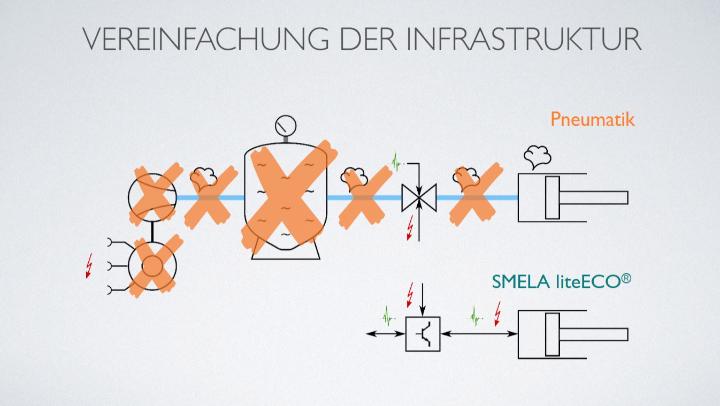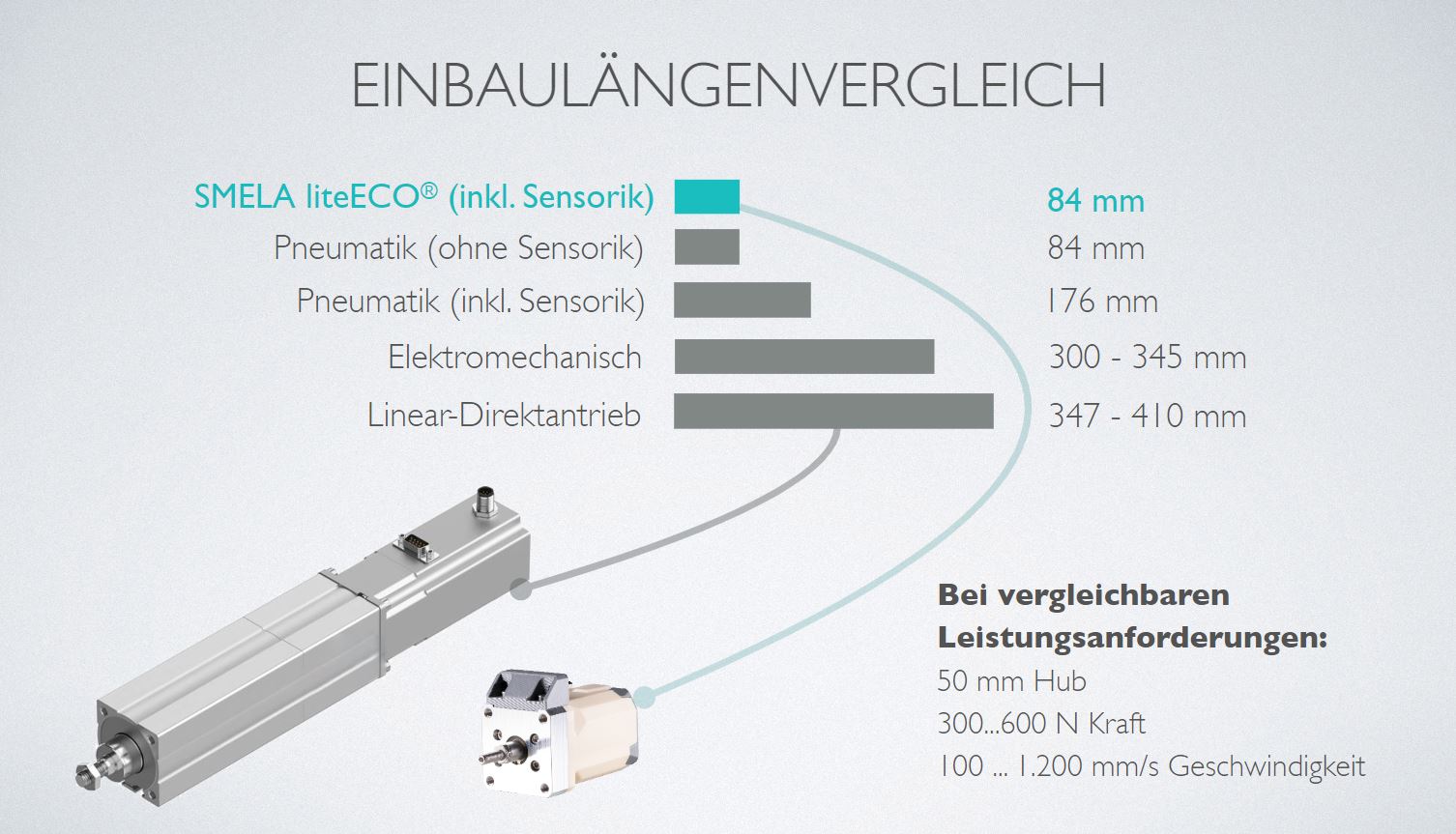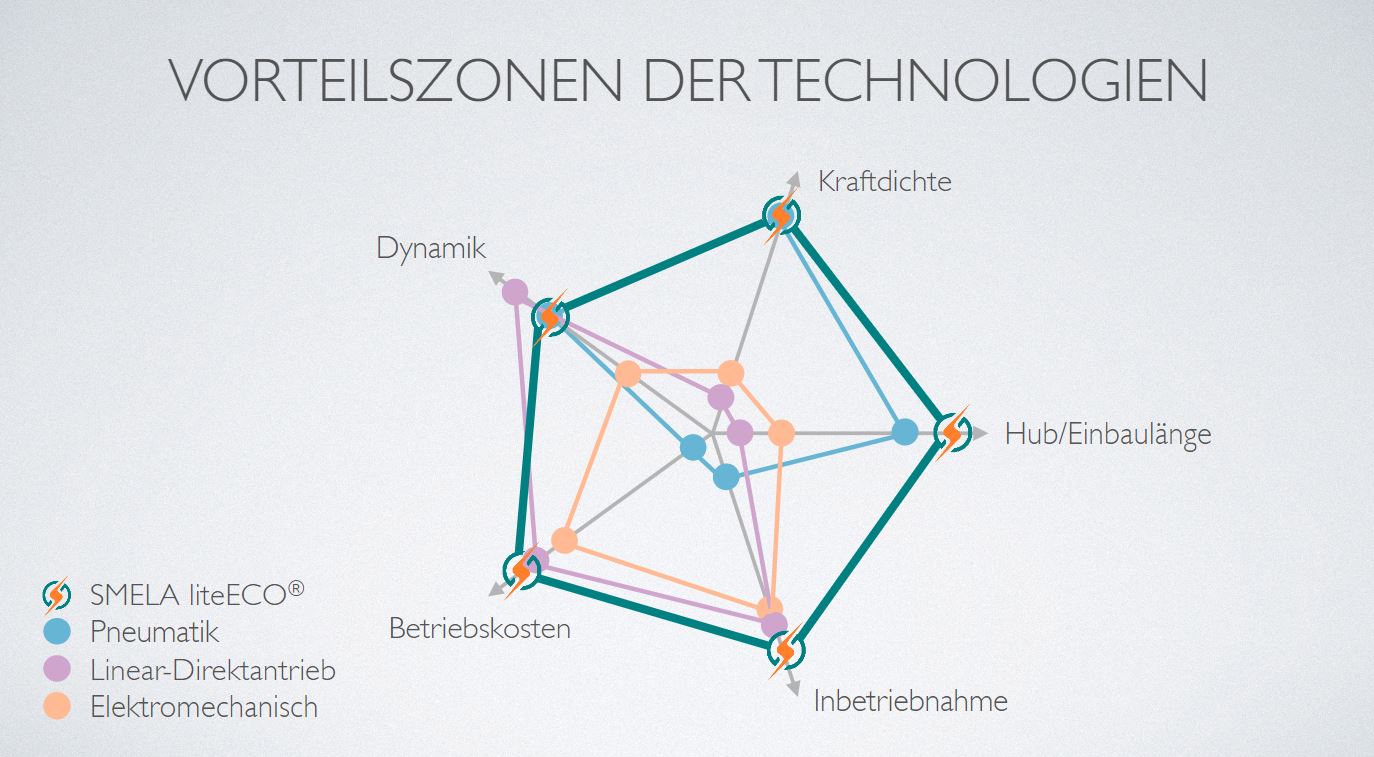The problem and current state of the art
Pneumatic and hydraulic cylinders have been state of the art in plant engineering for quite some time to realize linear movements with high speed or large focuses. However, electric drive technologies have been increasingly competing with compressed air and oil-dependent systems for some years now.
Electromechanical actuators in particular are far superior to their mediacontaining predecessors in terms of environmental friendliness, handling and energy savings. A major advantage of electromechanical actuators is their simple integration into the plants as well as their low-noise operation. They do not require a complex infrastructure consisting of compressors, hoses and valves. This also massively reduces the use of wear parts and results in significantly lower maintenance and space requirements. Contamination with oil is eliminated. In addition, electromechanical actuators allow a high degree of positionability due to their technology and can be parameterized and controlled very easily via centralized or decentralized drive conttrollers. The force, stroke and speed spectrum can be configured depending on the application.
The lower procurement costs of individual pneumatic and hydraulic cylinders have often led to electromechanical actuators being ignored in the past. However, when considering the costs incurred over the entire service life, it is easy to see that an eletromechanical solution quickly exceeds the acquisition costs due to the high energy and maintenance cost savings of more than 75%. If a system can do without the oneumatic or hydraulic infrastructure completely, the costs are usually amortized before the first hour of operation.
Neverless, the elctric actuators used to date have a shortcoming in terms of installationspace: they use a serial connection of standrad electrical and mechanical components. This requires considerable installation space in the systems. Linear direct motors, on the other hand, which do without mechanics and appky the force purely electromagnetically, require a large electromagnetic interaction surface and thus also a multiple of the installation space.
The SMELA solution
The SMELA liteECO® linear actuators represent a holistically optimized mechatronic system consisting of an electric mechanics and integrated sensor technology. The telescopic arrangement of the mechanical and electrical components, which are coaxial to each other, allows the plunger to be nested in the actuator without sacrificing motor performance and force. This results in a very favorable ratio of travel to overall length. All components of the system are optimized and matched to each other. This enables the construction of actuators that are up to 85 % more compact than previous electrical alternatives and can also save more than 75 % of the energy and maintenance costs compared to pneumatics.
The most important unique selling point compared to competitor solutions is therefore the short installation length with a defined stroke or travel path of the plunger. Comparing the installation lenghts for a stroke of 50 mm and a force of min. 300 Newton, it becomes apparent that the liteECO® actuators are up to five times more compact than the comparative technologies. Thereby
they can be used advantageously wherever high force is required but little installation space is available: for example in mobile applications, robotcis or compact machines. Both as retrofit replacemnets for existing systems and for all newly planned systems.
Comparison of the installation lengths of competing drive technologies with the SMELA liteECO®
However, the unconventional approach not only forms the basics for building the most compact pneumatic alternative, but also a very sustainable one, because the liteECO® actuators perform in the continuous load test, cycle munbers similar to pneumatic cylinders (> 10 million double strokes). Any wear on the mechanics that occurs under high load can be compensated for by the control system. In addition, it is possible to replace the mechanics very easily and cost-effectively via refurbishment, thus helping the product to achieve several life cycles. The patended sustainable product design therefore not only conserves valuable resources, but also reduces avoidable industrial scrap.
Network diagram: Comparison competing drive technologies
The network diagram shows qualitative parameters of competing drive technologies. The resulting areas illustrate the comfort zones of the previous technologies. For the first time, liteECO® linear actuators combine the advantages of pneumatic and electric drives in one actuator. They thus serve a wide range of requirements in a single actuator. The resulting benefits for plant engineers and operators lie in particular in:
- the compact design and saving of installation space
- the media-free operation (no compressed air) and a single-cable connection
- the smooth, sealed plunger (pharmaceutical and food sector)
- a direct replacement option for the existing pneumatic short-stroke cylinders by following ISO15552 (plug and play replacement)
Further advantages plant manufacturer:
- simple and time-saving commissioning
- flexible configurability and inherent controllability of motion profiles without the installation of additional measurement systems
Further advantages plant operators:
- 75 % Saving in operating costs
- Acquisition of operating data for system monitoring (condition monitoring)
- Refurbishment-service with favorable follow-up costs


